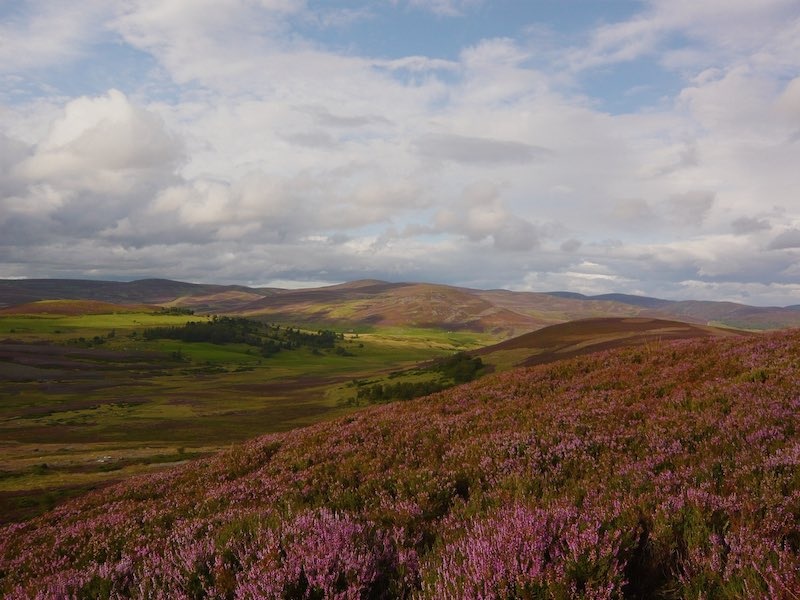Pictured: Heather in bloom, Gairnshiel, picture by Adam Smith.
Scotland’s bonnie purple heather is one of the country’s most characteristic habitats with heather, berries and grassland accounting for around 50 per cent of all Scotland’s uplands.
But how much do we love it, and expect to see it in bloom in late summer, and do we know the many benefits it brings?
With the Scottish Government now considering the Grouse Moor Management Review Group report, an essential consideration is that our heather moorland is a managed landscape, and one of the main drivers for managing it, and for landowners to invest in it, is grouse shooting.
To find out what the Scottish public thinks about heather moorland, the Game & Wildlife Conservation Trust last summer commissioned market research company Fastmap to find out more.
The Fastmap survey concluded that:
The vast majority of Scottish citizens (89%) have either a positive or very positive association between heather moorland and the Scottish landscape.
A greater majority (92%) agree or agree strongly that Scotland’s heather moorland is important in providing a valuable habitat for a wide range of biodiversity.
A lesser proportion (69%) recognised the Scottish uplands as a source of healthy food.
A majority (73%) recognised Scottish heather moorland as an important source of rural employment.
Managed heather moorland provides a habitat for many upland species, birds, animals and plant life, including lapwing, curlew and other waders, mountain hares, bumblebees, and, of course, grouse.
Bruce Russell, Director Scotland, Game & Wildlife Conservation Trust, says:
“The results of this survey are unequivocal.
“Scotland values its heather for a range of reasons.
“From an economic perspective heather also clearly has tourism value, including that generated from country sports.
“Add to this the enhanced environmental benefits that accrue through private investment as a consequence of habitat management and predator control, and it can be seen as delivering high conservation gain at low cost to the public purse.
“Without moorland management certain species would still exist but at far lower densities, and therefore be at far greater risk.
“But take away moorland management and the reason for investment and all that our heather moorland delivers by way of biodiversity, food and rural employment, will diminish and be placed at risk also.”
Moorland habitat is important to local business too.
Alan Sneddon, who owns and runs Crieff-based Hidden Glen Safaris says:
“Heather is undoubtedly a major draw for outdoor tourism alongside our wildlife, scenery and culture.
“At that time of year when it’s in bloom it’s a spectacular backdrop – a stunning addition to our already wonderful landscape.
“Visitors ask about heather, they want to see it, they want to photograph it, and post pictures of it on social media.
“We certainly shouldn’t take it for granted.”



